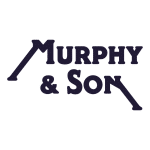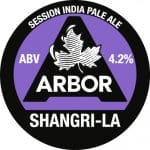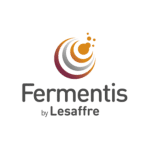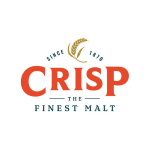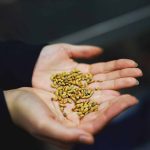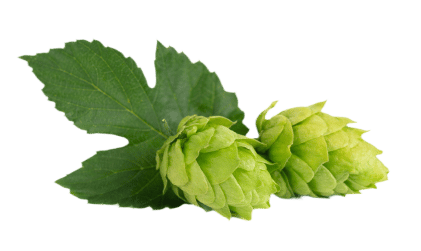BREWER COST SAVINGS PODCAST: MEET YOUR MAKERS
Brewer Cost Saving Tips
LISTEN TO THIS COST SAVING POD
In this episode we have another catch up chat with our brewery supplier friends to see what’s new in the world of malt, yeast and brewing aids.
From perfecting your malt bill to dialling in yeast precision, we cover practical tips, sustainability ideas, supplier support updates, and ways to boost efficiency and cut costs.
In this week’s Brewer Cost Savings episode, we’re joined by some of the best minds in brewing and product supply. Stephaine Brindley and Tom Evans of Murphy and Son bring their best technical tips from balancing your water profile to boosting yield. Axel Jany, International Malting and Brewing Expert from Weyermann®, shares how to naturally reduce PH. From Crisp Malt, Mike Benson offers a sales manager’s take on the industry’s evolving needs, while Laura Barscotti, European Sales Director at Fermentis, adds her valuable viewpoint on fermentation and flavour.
FIVE MINUTES WITH FARAM
BREWER COST SAVINGS
That’s not all, Maddie sits down with Libby from Goff’s Brewery in the Cotswolds, home of the popular beers Cotswold Gold and Jouster.
Libby shares her favourite food and beer pairings, reveals her slightly secretive past, and talks about her deep appreciation for the brewing community.
THIS BREWING COST SAVINGS PODCAST IS ALSO AVAILALE ON
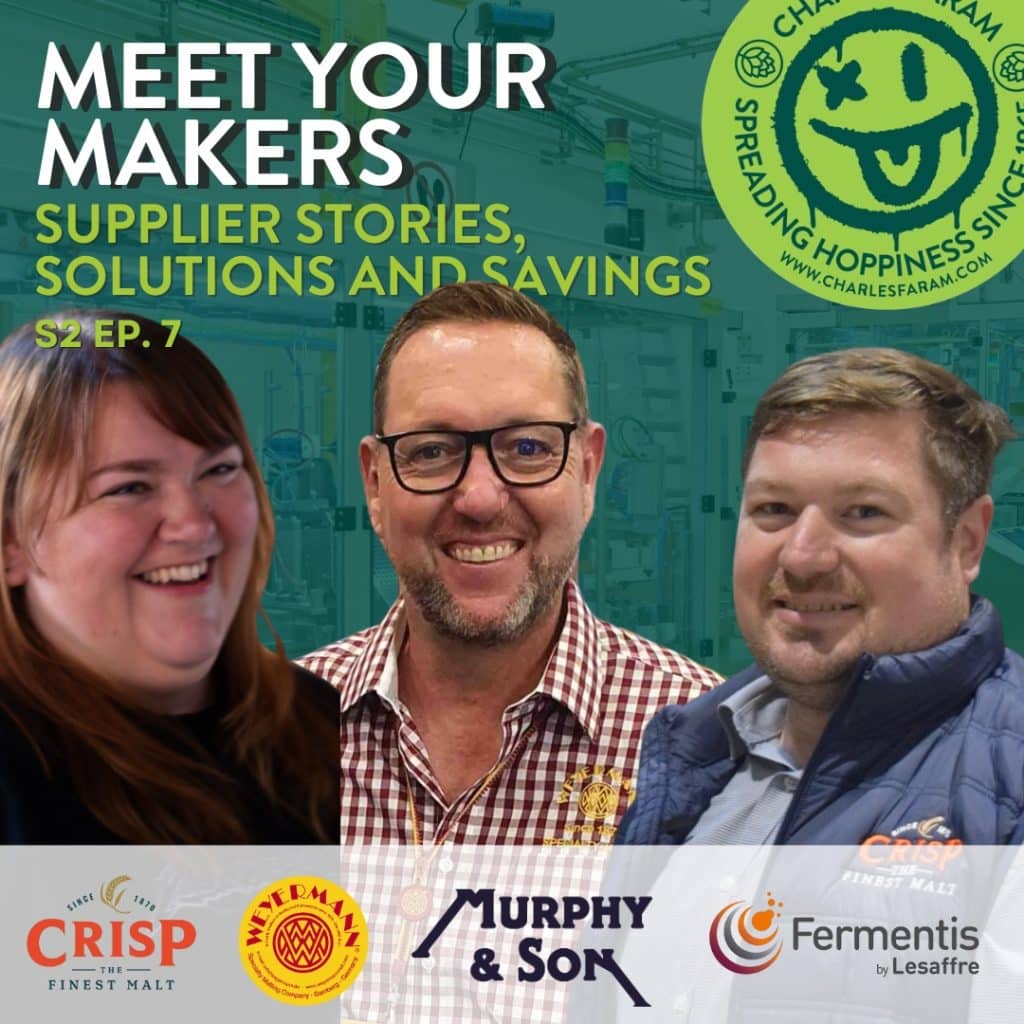
“It’s all about the balance…”
– Axel Jany, International Malting and Brewing Expert
Would you rather read than watch or listen?
Check out the Brewer Cost Saving Transcript
Intro and Welcome to the Brewer Cost Savings Podcast
00:00 – Host: Patrick Whittle and Maddie Lewis
“Hello and welcome back to Spreading Hoppiness: The Charles Faram Podcast. This week we’re bringing you a full brewing starter kit — chatting with our suppliers about malt, yeast, brewing aids, and everything in between.
I’m joined by Axel from Weyermann® Specialty Malts, plus Steph, Tom, Mike, Laura, and Libby from across the brewing world.
Weyermann® Speciality Malts – Catch up with Axel Jany
00:30 – Guest: Axel Weyermann® Speciality Malts
“I’m a trained brewer and maltster. I started my career back in 1987 in a northern German brewery and later studied in Berlin. After graduating, I had the option of joining a brewery or going into the supplier side — I chose the supplier industry and have been installing filtration systems and working globally ever since. I joined Weyermann® ten years ago.”
01:45 – Patrick Whittle
“What made you choose suppliers over brewing?”
01:48 – Axel
“Back then, it was the appeal of travel. The early 1990s offered the chance to visit breweries worldwide and help set up equipment. The job in a brewery might’ve been bottling line work, so the supplier route was much more appealing.”
03:10 – Patrick Whittle
“Give us a brief insight into what makes Weyermann unique.”
03:12 – Axel
“Craft beer changed the game. Weyermann® was a malt house with a small portfolio focused on large breweries. When Sabine and Thomas Weyermann® visited American craft brewers, they saw demand for niche malts — Vienna malt, Carafa Special® etc. We began creating malts to match brewer creativity, and our specialty malt catalog grew into the world’s largest.”
05:30 – Patrick Whittle
“Is your portfolio still expanding today?”
05:33 – Axel
“Always room for innovation. It’s not just about modern barley varieties — we’re bringing back flavourful base malts like Barke® and Isaria that were phased out for higher yield. These older varieties offer great malt flavour.”
07:00 – Patrick Whittle
“How have brewer preferences around malt changed over the years?”
07:02 – Axel
“Craft beer prompted a shift toward more expressive malts. Styles like red beer, particularly the Nuremberg Red, require unique malts like Melanoidin. Early craft focused on hops, but now brewers want sessionable lagers and malt-forward balance.”
08:10 – Patrick Whittle
“What is Weyermann® doing to be more sustainable?”
08:12 – Axel
“Malting uses a lot of energy—re-wetting grain, drying again. So we’re investing in solar, hydrogen mixes, and recycling heat from generators to preheat kilns, and our sustainability report is available on the website.”
09:50 – Patrick Whittle
“What malts in your portfolio are most popular?”
09:53 – Axel
“With over 85 products, it’s hard to say by tonnage alone. But Carafa® Special is widely used for gentle chocolate notes. Acidulated malt is underrated — just 2–3% in the mash can optimise pH naturally, improve yield, and reduce chemical use.”
11:30 – Patrick Whittle
“Any last advice for brewers? Maybe a brewer cost saving tip?
11:31 – Axel
“Try Acidulated Malt, it’s a natural way to adjust pH later in the process. Good pH equals better drinkability, especially for non-alcoholic or sour beers.”
Murphy and Son – Catch up with Steph Brindley and Tom Evans
12:30 – Maddie Lewis
“Could you tell us about yourselves and your roles at Murphy’s?”
12:33 – Steph Brindley
“I’m Steph, technical rep at Murphy & Son. I support brewers, helping improve processes and educate on our products.”
12:40 – Tom Evans
“I’m Tom, also a technical rep. I cover the North, Scotland, and Ireland. I’ve worked in breweries of all sizes and qualified as a Master Brewer. It’s a great industry,super collaborative.”
14:00 – Maddie Lewis
“How did you both get into this role?”
14:03 – Steph
“I loved brewing but really enjoy problem solving. This role lets me help customers daily and assist with into technical solutions.”
14:10 – Tom
“I wanted progression and a wider view of the industry. Murphy’s lets me visit breweries, meet people, and contribute meaningfully.”
15:10 – Patrick Whittle
“Any new products coming out?”
15:12 – Tom
“This is something we have been doing for years, but we’re expanding sustainability solutions, we’re looking like nitrogen generation to reduce carbon footprint. Also looking at MCDi, a tunable water treatment unit that’s more flexible than RO systems.”
15:50 – Steph
“This is less exterme than RO, this is a tuneable treatement where as RO takes out everything”
16:10 – Maddie
“Where might you want that flexibility?”
16:30 – Steph
“For most beers, you want some mineral content, with an RO machine your using the machine to take absolutely everything and then putting some back later on.”
17:40 – Tom
And it gives the brewery the flexibility to do what they want, which is really nice
18:02 – Tom
“We also focus on shelf life — new tannic acid products like Brew Tea, which is a nice allround and can be added into the mash or the copper. We also have Mashlife. Mashlife is made from pomegranate and improves hop anf flavour retention, offers antioxidant effects, and helps stop skunking, also providing hop stability in the long term.”
18:30 – Tom
“Another exciting product is Stays — it keeps haze proteins in suspension, keeping the beer hazy. Stays targets the proteins and doesn’t affect the flavour, it also works well in cider”
18:50 – Steph
“This is the nice side of our R and D department, we often create one product and this how it will work in different products. That’s what happened with the ciders, they are obviously a very different product, but Stays works the same in cider.”
19:45 – Patrick Whittle
“Do many products cross over between beer, cider, and wine?”
19:47 – Steph
“Definitely, we find a lot of products which cross over with how the products can be used, you might need to optmise them different, because they are be used in a different application. A good example of this is Dehaze was designed to stop chill haze from forming but we found because it is attacking those protein sites with the gluten molecules we also found it is reducing the gluten of the beer. So when people buy this enzyme, sometimes its to stop chill haze, or to reduce gluten.”
20:30 – Maddie Lewis
“Tell us about your Nottingham University partnership.”
20:32 – Steph
“We’re really excited about this, we’ve moved our lab to Nottingham University’s brewing department and combine our lab with there. This gives us access to pilot kits and new equipment, and will super charger the R and D we can do there.”
21:30 – Maddie Lewis
“How has the development relationship over the years?”
21:45 – Steph
“There has always been link, even before this we have be supporting master and PhD students and support projects.”
22:15 – Tom
“Steph and I are alumni of Nottingham which gives us a connection, so it’s special to be giving something back.”
22:30 – Patrick Whittle
“Have you got any PhD student doing anything personally for you guys? For example we have projects on wild flower and bio char”
22:45 – Steph
“We have PhD student who is looking at the different reasons due to why different hazes form.”
23:45 – Patrick
“Any other goals for the future with this partnership?”
24:10 – Steph
“We are obviously very early on within the partnership, but we hope to boost the tests we can run and the research and development of products. We have the use of a pilot kit which will help us obtained more realistic product results.”
24:45 – Maddie Lewis
“Any sustainability efforts personally?”
25:00 – Tom
“I try to plan my travel smartly and use public transport where possible.”
25:10 – Steph
“I always say to customers feel free to setup a teams or zoom call, reducing time and travel.”
25:20 – Steph
“For me I have been trying to get some more real world data about our products and the claims we make on them. I was speaking to a brewer the other day about Trizyme, because it is quite easy to say it will improve your efficiency but by how much
So I joined them for a brew day where they did two brews exactly the same apart from adding Trizyme, and he increased the efficiency by 4% which on that kit equalled 1 cask worth of beer.”
25:50 – Maddie Lewis
Could you double the dose and create even more efficiency?
25:58 – Steph
“It depends on the malt you are using, if you are using really good quality malt the enzyme is compensating for temperature changes, but if you were using poor quality malt you would see bigger improvements, but you might encounter other issues due to poor malt quality.”
28:41 – Patrick Whittle
“Even though it increases yield, does the cost of the products outweigh the increased beer yield, creating a Brewer Cost Saving
29:04 – Steph
“Absolutely, this a very low cost way of increasing beer yield”
29:11 – Patrick
“That is good to have some real world data to show a direct comparison and the increase in efficiency”
29:46 – Steph
“Even though you will receive that instant increase in yield you will also be able to count on the efficiency, so it won’t matter if you keep your malt somewhere cold in winter and hot in summer or the PH is the little bit off. The Trizyme will help even it all out.”
30:01 – Maddie Lewis
“What are you guys looking forward to personally?”
30:10 – Steph
“Well it is always busy, I always look forward to BeerX, we also have other opportunities for events around the world. I will be helping out my American colleagues at CBC in April and DrinkTec in September”
30:46 – Tom
“For me, it is getting used to it all. I have a few talks coming up in Ireland, so I am looking forward to all of that”
Crisp Malt – Catch up with Mike Benson – Brewing Sales Manager Uk
31:15 – Maddie Lewis
“Mike, can you explain your roles at Crisp and what you do please?
31:30 – Guest: Mike Benson
“I’m Mike Benson, UK Brewing Sales Manager at Crisp. I’ve worked here five and a half years and manage a team of people, and also cover Western Europe.”
31:45 – Maddie
How did you get into the Malting and brewing industry?
27:32 – Mike
“I started brewing in 2002 at Burtonwood Brewery, at the same time they installed a high speed bottling line, mainly making Bacardi Breezers. I was working in the lab, I worked hard and was giving the opportunity to move into the brewery and in 2013 Brewery Manager, then moved onto Love Lane, where I commissioned the plant. Then the opportunity came up to join Crisp and I jumped at the chance because I wanted a new challenge.”
28:50 – Patrick
“How has Crisp evolved since you started, how was it changed?”
30:00 – Mike
“We’re always innovating — focused on consistency, service, and quality. We’re also pushing sustainability and creating products that help brewers streamline.”
33:32 – Maddie
“Any new products?”
33:45 – Mike
“Not right now, but we hope to bring back our small batch series. COVID paused it — we’d made some fun, creative malts.”
33:50 – Patrick
“What sustainability steps are in place?”
34:10 – Mike
“Malting uses lots of energy, and we are trying to invest in using less energy, but the biggest carbon footprint is barley with most of our resource going into the field. We have started to gather data, eg Co2 and Nitrogen usage from our ABC grower group. Trying to reduce inputs but increasing yield.”
34:50– Patrick
Are your farms all over the country?
35:00 – Mike
“We are lucky where we are, especially Great Ryburgh, most of the malt is sources from around 30 miles around the malting facility. We try to keep the farms as close as possible. Our transport fleet also runs of HVo – which massively reduces our diesel usage.”
36:00 – Patrick
“If you could develop any malt, what would it be?”
36:10 – Mike
“For me it would be something that makes the process easily, reduce the brewers day or reduce the energy that has to be used, and this is something we might see soon…”
37:00 – Maddie
“Do you fancy any challenges in today’s brewing landscape?”
37:15 – Mike
“Definitely. Brewers are using less malt now, and we have to plan how much barley needs to be planted, affected the supply chain. The weather is another challenge, as you guys would know being hop farmers. The biggest challenge is managing the supply, with new changes in recent years.”
37:35 – Maddie
“Any diseases like Verticillium Wilt in hops, that are a big problem for barley crops?”
38:00 – Mike Benson
“Barley breeding focuses on disease resistance and drought tolerance. We did see some ergot last year, which is actually interesting, Dave Griggs mentioned it’s linked to hallucinations and comes from a wet growing season. One of the theories, is during the witch trials, odd behaviour could have been associated with consuming ergot. If ergot-contaminated grain was used in bread, it could explain things!”
38:40 – Maddie
“So how do you deal with that problem?”
38:55 – Mike Benson
“We have strict quality control. Every truck is sampled multiple times using a probe to get representative data. Anything with issues gets rejected, simple as that. Our promise is quality, and we can’t make good malt from bad barley”
39:50 – Patrick
“Any malt tip you wish more brewers understood? Any brewer cost saving tips?
40:00 – Mike Benson
“I think most people know it but there’s no perfect malt spec. Everything affects everything. For example, you can’t have low moisture and no colour, everything affects everything else.”
40:45 – Patrick
“What’s next for you personally at Crisp?”
35:47 – Mike Benson
“I love what I do. There’s no job I’d rather be doing — just looking forward to helping brewers make great beer, but no personal growth, so I aiming to continue providing the great service we provide.”
Fermentis – Catch up with Laura Barsotti
41:30 – Patrick Whittle
“We’re here with Laura from Fermentis. Can you introduce yourself and your role?”
41:45 – Laura Barsotti
“Hi, I’m Laura Barsotti, Director of Sales for Europe. I manage around 15 people in technical and sales. I come from the bakery business, so beer is brand new for me.”
42:00 – Patrick Whittle
“So, coming from bakery business, what lead you to Fermentis?”
42:30 – Laura Barsotti
“Fermentation links both worlds. But I was also interested in managing a bigger region and I wanted to learn something new, wine, beer, it’s all fascinating.”
42:45 – Maddie Lewis
“Anything new at Fermentis coming out?”
43:00 – Laura Barsotti
“Yes — we’re launching a new yeast called SH-45. It’s fruity and aromatic, and will complement our more neutral strains like W-34/70. It will bring a new fruity flavour to the brewer and great for lager styles, a style currently trending.”
44:00 – Patrick Whittle
“What measure are Fermentis making to promote a more sustainable future?”
44:15 – Laura Barsotti
“That’s being led at the group level. There will be top-down implementation into Fermentis later”
44:47 – Maddie Lewis
“Have you seen other brewing trends lately? Maybe a brewer cost saving tip?”
44:58 – Laura Barsotti
“Definitely low and no alcohol beers — it’s a huge global trend. We’re working on new yeast strains, a new great specifically for those styles.”
45:25 – Maddie Lewis
“Which current yeast do you recommend for low and no beer?”
45:35 – Laura Barsotti
“Our LA01 product — it’s our dedicated yeast for non-alcoholic brewing, and that is the only strain so far…”
46:00 – Patrick Whittle
“Where do you see yeast research going?”
46:10 – Laura Barsotti
“Non-Saccharomyces strains are promising, offering new yeast profiles and strains.
46:28 – Maddie Lewis
“Can you explain the new packaging updates?”
46:45 – Laura Barsotti
“Absolutely. Our new sachets include a leaflet with product info, a unique QR code for traceability, a dosing hole/system for clean pouring, and on the new production line and every sachet will be check for softness check before leaving production. All to ensure top quality. These improvements are available on 500g and 100g packets”
48:22 – Maddie Lewis
“What are you looking forward to personally at Fermentis?”
48:35 – Laura Barsotti
“I’m still new, so I want to deepen my understanding and stay in this role for a few years. Long-term, I’d love to move into sustainability based role, hopefully at Fermentis.”
Five Minutes with Faram segement of the Brewer Cost Savings Podcast
49:50 – Maddie Lewis
“And now it’s time for this week’s Five Minutes with Faram. You’re joining me, Maddie, at Goff’s Brewery in the Cotswolds with Libby.”
49:55 – Libby (Goff’s Brewery)
“I’m Libby, from Goff’s Brewery in Winchcombe, Cotswolds.”
50:05 – Maddie Lewis
“What is your favourite hop?”
50:07 – Libby
“If we are talking about British Hops, I would say Olicana®. It’s mellow and blends well with American hops, a great hop for a variety of uses.”
50:30 – Maddie Lewis
“Do you use lots of hops from the Charles Faram Hop Development Programme?”
50:32 – Libby
“Yes we use a few, and this year we’re brewing our first green hop beer with Harlequin®!”
50:50 – Maddie Lewis
“Do you have a favourite beer?”
50:52 – Libby
“From our own range — our Mango IPA — it’s 5% but drinks like a 4%. Also, Shangri-La from Arbor.”
51:20 – Maddie Lewis
“Food pairing?”
51:22 – Libby
“It’s got to be cheese, especially a bourbon barrel-aged stout with Stilton. Also had a cucumber sour with curry once — amazing.”
52:05 – Maddie Lewis
“Favourite beer destination?”
52:07 – Libby
“Any good pub with cask ale! Deya in Cheltenham is fab. If I was going abroad I would go San Diego — West Coast.”
52:40 – Maddie Lewis
“Favourite pub?”
52:42 – Libby
“The Jolly Brewmaster in Cheltenham. It’s traditional, wet-led, and 7 or 8 cask ales on at one time and the beer is always beautifully kept.”
53:25 – Maddie Lewis
“One item you couldn’t live without in the brewery?”
53:27 – Libby
“Squeegee. Mine’s called Percy. He’s blue, makes good contact with the floor and he’s perfect.”
54:00 – Maddie Lewis
“Music during brew day?”
54:02 – Libby
“That is like asking me what my favourite hop is! Blues for mellow days, house for cleaning days, you can squeegee to the beat.”
54:25 – Maddie Lewis
“If you weren’t brewing, what would you be doing?”
54:27 – Libby
“Working with dogs — probably rescue work. I’m training to be a dog behaviorist. I think I prefer dogs to the people.”
55:15 – Maddie Lewis
“Favourite breed?”
55:17 – Libby
“German Shepherd.”
55:40 – Maddie Lewis
“Biggest brewing inspiration?”
55:42 – Libby
“Too many to name, but what stands out is how collaborative brewing is. I’ve got an inner circle of 5 brewers I can call anytime, and ask for advice or why something isn’t going quite right.”
56:15 – Maddie Lewis
“What got you into brewing?”
56:17 – Libby
“Total accident. Didn’t even like beer at first, because I didn’t understand the potential of beer. Got a job and fell in love with the magic — 4 ingredients, endless results, styles, flavours and aromas.”
56:40 – Maddie Lewis
“Did you have another job before?”
56:42 – Libby
“Worked in mobile phone forensics… can’t say much more! You don’t have security clearance I’m afraid.”
57:15 – Maddie Lewis
“Favourite festival?”
57:17 – Libby
“I love the one up the road, Postlip Festival — beautiful grounds and a great local brewer lineup. Every July they host a big beer festival in one of the barns and they try to support local independent brewers.”
57:40 – Maddie Lewis
“Any hobbies or interests outside of brewing?”
57:42 – Libby
“DOGS! Also I am a little bit of a secret gamer. Red Dead got me in the feels.”
58:00 – Maddie Lewis
“What is the last beer you brewed?”
58:02 – Libby
“Extra pale session IPA with elderflower and Cashmere hops. A super fresh beer, perfect for good weather.”
58:30 – Maddie Lewis
58:32 – Libby
Fuggles. It’s a classic and underrated.
59:00 – Maddie Lewis
What’s next in the industry for you?
59:02 – Libby
I want to continue producing great cask beer, we’re looking to add kegging, diversify styles, and continue supporting women in brewing.
59:30 – Maddie Lewis
That’s a wrap — thanks so much!


